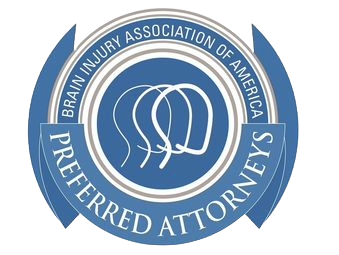
Burns are common workplace hazards. Burn injury victims can be left with physical and emotional scars that may never heal. A worker who suffers a burn injury requires immediate first aid and/or emergency medical assistance.
There are distinct types of workplace burn injuries:
- Thermal burns, from open flame or another direct heat source, such as a stove, industrial machinery, hot liquids, steam, etc.
- Electrical burns, from electric currents, sparks or arcs
- Chemical burns, from corrosive or caustic materials, including cleansers and other solvents.
If a co-worker suffers a burn of any kind in the workplace, you should summon help immediately. You can also render assistance until help arrives, depending upon the type of burn incident.
Thermal Burn Assistance
In the case of an open flame that catches a person’s clothing on fire, the immediate help to provide is assistance in the “stop, drop and roll” burn safety routine to put out the flames. If a blanket, jacket or other piece of material is handy, use it to grab the worker if they need calming and to smother the flames.
Burn victims quickly experience swelling. It is important to remove jewelry, such as necklaces, bracelets and rings, quickly after a burn injury, the Centers for Disease Control and Prevention (CDC) advises. Remove burned clothing from the victim. Where clothing sticks to the body, cut around it. Do not tear the skin.
Further help for a thermal burn victim depends upon the severity of the burn:
- First-degree burn. Treat with cool, wet compresses or immersion in cool, fresh water until the pain subsides. Cover the burn with a bandage or sterile gauze. A first-degree burn that involves substantial portions of the hands, feet, face, groin or buttocks, or a major joint, requires emergency medical attention.
- Second-degree burn. If the burn is limited to an area no larger than 3 inches, it can be treated like a first-degree burn (above) and the victim might take over-the-counter pain relievers. If the burned area is larger, or if the burn is on the hands, feet, face, groin or buttocks, or over a major joint, treat it as a severe burn injury and get medical help immediately.
- Third-degree burn. Immediate medical attention is essential. Cover the burned area with a cool, moist bandage or towel. Elevate the burned area higher than the victim’s head if possible. If the victim shows signs of shock, have them lie flat, cover them with a blanket and elevate their feet about 12 inches.
Help for an Electrical Burn Victim
An electrical burn may appear minor or not show on the skin at all, but the damage can extend deep into the tissues beneath the skin, the Mayo Clinic says. The jolt from an electrical burn can throw the victim off of their feet, resulting in additional injuries from the fall. A significant electrical jolt can cause a heart rhythm disturbance or cardiac arrest.
Summon emergency medical help if the person who has been burned is in pain, is confused or is experiencing changes in breathing, heartbeat or consciousness. While awaiting help, determine whether the burn victim is still in contact with the source of electricity. If they are, move the source away from both you and the injured person using a dry, non-conducting object made of cardboard, plastic or wood. If possible, turn off the source of electricity.
Once the victim is not connected to the source of the electrical burn, check for signs of circulation (breathing, coughing or movement). Begin cardiopulmonary resuscitation (CPR) if these signs are absent. Lay the victim down with their head slightly lower than their trunk, if possible, and their legs elevated to prevent shock. Cover any areas that appear burned with a sterile gauze bandage.
Chemical Burn Treatment
If a chemical produces a minor burn on a person’s skin in the workplace, first brush off any dry chemical and/or rinse the skin with cool water for 10 to 20 minutes, the Mayo Clinic says. Afterward, a minor chemical burn can be treated like a first-degree thermal burn (above), with a bandage and pain relievers. Remove the victim’s clothing and jewelry before swelling starts.
Get emergency medical assistance for a chemical burn victim if the:
- Chemical burn occurred on the eyes, hands, feet, face, groin or buttocks, or over a major joint.
- Chemical burn caused a second-degree burn to an area more than 3 inches in diameter.
- Person shows signs of shock, such as fainting, pale complexion or shallow breathing.
- Burn victim’s pain is not eased by over-the-counter pain relievers.
The Mayo Clinic also advises calling the poison control center at 800-222-1222 if you are unsure whether the chemical is toxic. Obtain the chemical container or a complete description of the substance for identification by medical professionals.
Get Legal Help After a Workplace Burn Injury
A workplace burn injury victim may suffer deep tissue damage that leads to years of expensive treatment and recovery. Medical bills and other costs and losses could easily exceed six figures. Some victims of workplace burn injuries never return to work.
Many accidents that cause workplace burn injuries are avoidable. They are often caused by employers and/or supervisors who ignore safety regulations. But even if an employer followed proper procedures, a workplace burn injury victim may be due compensation. South Carolina’s workers’ compensation program provides benefits without a finding of negligence.
Beyond obtaining a workers’ comp settlement, an employee who suffered a serious burn at a job site could be entitled to pursue a personal injury lawsuit under certain circumstances.
A personal injury lawsuit in a workplace burn case could be an option if:
- A defective product caused the burn;
- Someone other than the direct employer was negligent, such as a project manager, an architect or engineer; or
- A worker employed by a subcontractor or a vendor caused the incident leading to the burn injury.
If a party other than the employer is responsible for the burn victim’s injury, a personal injury lawsuit might be an appropriate course of action.
Our South Carolina Workplace Burn Injury Attorneys Can Help You
Workplace burn injuries are often severe and occur under complex circumstances. To find out whether you have a viable legal claim, discuss it with one of our workplace burn injury lawyers at Joye Law Firm.
We are ready to provide you with a free and confidential initial consultation. Call Joye Law Firm. You can reach us at 888-594-7756 or fill out our online case evaluation form.
Sources:
- CDC – Mass Casualties: Burns
- Mayo Clinic –Burns: First Aid
- Mayo Clinic – Electrical Burns: First Aid
- Mayo Clinic – Chemical Burns: First Aid




























